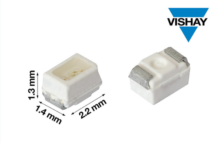
By 2026, the Asia Pacific region will have the largest install base of smart streetlights, accounting for over one-third of global installations as predicted by ABI Research. Smart Street lighting is gaining traction due to developing smart cities and optics-related technological advancements.
According to Adarsh Krishnan, Principal Analyst at ABI Research, China and India are major drivers behind this growth. Both countries not only have ambitious LED street lamp retrofit programs but also are building local LED component manufacturing facilities to lower lamp costs. “In India and China, LED streetlights have seen a very low penetration of lighting control systems due to a nascent domestic solution vendor ecosystem and international vendors that are unable to adapt their solution to meet local market requirements for innovative yet low-cost products, “concluded Krishnan.
Annual revenue from smart street lighting will grow at CAGR 31% to reach US$1.7 billion in 2026. Street lighting programs today, and over the next several years, will focus on replacing conventional lamps with LED lamps. However, only 20 percent of LED street lamps will be truly “smart” through integration with lighting controls systems. This imbalance will slowly correct itself and by 2026, central management systems will connect to over two-thirds of all new LED street light installations.
“Smart street lighting vendors such as Telensa, Telematics Wireless, DimOnOff, Itron, and Signify have been the most successful in benefiting from their cost-optimized products, market expertise, and aggressive commercial approach,” said Krishnan. “And, there are additional opportunities to be had by smart city suppliers leveraging street pole infrastructure by hosting of wireless connectivity infrastructure, environmental sensors, and even intelligent cameras. The challenge is finding a feasible business model that encourages deployment of multi-sensor solutions cost-effectively at scale.”
Smart street lighting applications that have seen the most adoption are (in order of priority): remote scheduling of dimming profiles based on seasonal changes, time shifts, or special social events; metering individual street light energy consumption for accurate usage-based billing; asset management to improve maintenance planning; and finally, sensor-based adaptive lighting.
Regionally, street lighting deployments are unique in a vendor and technology approach, as well as end-market requirements. In 2018, North America has been a leader in smart street lighting accounting for 31 percent of the global install base, followed by Europe and the Asia Pacific. In Europe, non-cellular LPWA network technologies have a dominant share of smart streetlights today but will cede some market share to cellular LPWA network technologies, especially as NB-IoT based end-devices become more commercially available in Q2 2020.
Low-cost solutions based on cellular LPWA network technologies followed by non-cellular LPWA network technologies will witness the most growth in the APAC region, accounting for a market share of 48 percent and 36 percent respectively of the total install base in 2026.
These findings are from ABI Research’s Smart Street Lighting market data report.


















